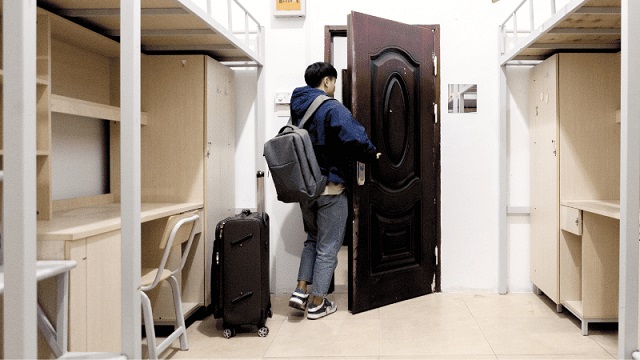Education
Bad student visa policy is no solution for bad student visa policy

From the MacDonald Laurier Institute
By Ken Coates
Making matters worse, a Statistics Canada report released in November of 2023 found that the number of postsecondary students actually enrolled at Canadian Universities was 20% to 30% smaller than the total number of individuals with international student visa’s.
Post-secondary education is in turmoil, thrust into the headlines by the Government of Canada’s decision to cut back on international student visas and work permits. The near panicked response by colleges and universities across the county has attracted attention. The federal decision is poor public policy, with flawed timing, significant negative impacts, and potentially serious long-term implications. But the ‘solutions’ implemented in January 2024 are a classic example of using bad policy to address bad policy. The fallout from this mélange of policy decisions could severely damage Canadian post-secondary institutions and the Canadian economy.
Governments, colleges, and universities have come to rely on international students, now numbering close to 1 million in Canada, particularly their tuition fees and the money that they bring into the country. The tuition fee revenues freed governments from the obligation to provide adequate funding to post-secondary institutions. Colleges and universities, for their part, used international student funding to avoid difficult, painful decisions related to the level of provincial support (the territories are not strongly affected by these processes).
The current controversy reflects more than a decade of poor and ineffective federal policies. Canada opened the gates for immigration, reaching unprecedented levels of refugees, formal immigrants, and hundreds of thousands of international students. Making matters worse, a Statistics Canada report released in November of 2023 found that the number of postsecondary students actually enrolled at Canadian Universities was 20% to 30% smaller than the total number of individuals with international student visa’s. Pointing to significant abuse of the study permit system, the report states, “It is unclear whether [the international ‘students’] stayed in Canada and, if so, what their main activities were.”
Our rapidly rising population is now blamed, not always accurately, for a serious national housing shortage and sky-rocketing prices, particularly in the major cities. The international student debate highlights the shocking shortcomings of the nation’s approach to housing and the absence of a thoughtful plan for population growth and rapid urbanization.
Bad federal policy is more than matched by poor provincial decisions, particularly in Ontario. The Liberal and Progressive Conservative administrations in Ontario have underfunded colleges and universities, dramatically so, relative to the other provinces and territories. Frozen tuition fees only added to institutional fiscal challenges. Several provinces, again led by Ontario, doubled down by authorizing many for-profit private colleges, most operating in league with public universities and colleges, to recruit international students. At the provincial level, the influx of international students, coupled with high tuition fees, masked the deficiencies of provincial funding, leaving underlying financial challenges unaddressed.
Colleges and universities had bad policies of their own. Without the government funding to meet their salary, administrative and capital costs, post-secondary institutions became addicted to international student fees, the crack cocaine of advanced education. Dozens of colleges and universities, enrolled thousands of international students, feeding the bottom line but increasing the reliance on international students and high tuition fees. They assumed, over-optimistically, that the steady flow of international students would never slow, let alone stop. They are now paying the price for that miscalculation.
Some institutions, particularly small institutions in northern and small-town locations, eve established satellite facilities in big cities to capitalize on strong student demand and to supplement small and stagnant enrollments on the home campus. International students and satellite operations were lifelines for institutions that would otherwise be in severe difficulty.
The Government of Canada’s response to the convergence of multiple bad policy streams consists of additional bad policy decisions. International student visas have been slashed by 35% and student-friendly work permit arrangements have been cut back dramatically. Canada’s once wide-open doors for international students have been partially closed. A carefully cultivated reputation for being receptive to foreign students has been degraded, if not dismantled, in one quick federal move.
The federal policy, announced with seemingly little coordination with provincial authorities and institutions, is a plainly political move, an urgent step taken by a Liberal government reeling in the polls. The decision was released in January 2024, at a key stage in the international student cycle. Colleges, public and private, are vulnerable to dramatic shifts in enrollment and they now face catastrophic losses of income. The implications go much further. Residences will want for students and employers of the eager international students will struggle to find replacements. Many college and university faculty and staff, particularly vulnerable short-term and sessional workers, will likely lose their jobs. And the national economy will lose out on a big portion of the billions of dollars spent annually by the international students.
The problem has been years in the making. The government may have been trying to make up for lost time but the hasty federal decision has already had an impact. Colleges and universities are already reporting sharp drops in applications. The message that Canada is no longer friendly for international students is out globally. The damage to student enrollment might be greater than anticipated.
A more appropriate approach would have been to announce a gradual reduction, starting in 2025, giving the colleges and universities time to adjust to a potential fiscal disaster. Another sensible alternative could have been to take aim at the abuse of the student visa system and to ensure those who entered the country under a study permit were actually enrolled in and attending classes. Bad policy often comes from knee-jerk reactions to political processes; good policy takes careful thought and, often, time.
Canada’s large international student recruitment industry brought billions of dollars into the Canadian economy. Thousands of students worked while they studied and made successful transitions to permanent resident status. Many people who came to Canada as high fee-paying students have become Canadian citizens and taxpayers. The students followed the rules, as did the colleges and universities that capitalized on clear and long-standing government policy. The federal and provincial policies may have been poorly designed and inappropriate, but governments set the parameters and expectations and shouldn’t punish others for their shortsightedness.
Bad policy, to be succinct, is no solution for bad policy, but that is what is happening to international student education in Canada.
Ken Coates is a distinguished fellow and director of Indigenous affairs at the Macdonald-Laurier Institute and a professor of Indigenous governance at Yukon University.
Alberta
Schools should go back to basics to mitigate effects of AI

From the Fraser Institute
Odds are, you can’t tell whether this sentence was written by AI. Schools across Canada face the same problem. And happily, some are finding simple solutions.
Manitoba’s Division Scolaire Franco-Manitobaine recently issued new guidelines for teachers, to only assign optional homework and reading in grades Kindergarten to six, and limit homework in grades seven to 12. The reason? The proliferation of generative artificial intelligence (AI) chatbots such as ChatGPT make it very difficult for teachers, juggling a heavy workload, to discern genuine student work from AI-generated text. In fact, according to Division superintendent Alain Laberge, “Most of the [after-school assignment] submissions, we find, are coming from AI, to be quite honest.”
This problem isn’t limited to Manitoba, of course.
Two provincial doors down, in Alberta, new data analysis revealed that high school report card grades are rising while scores on provincewide assessments are not—particularly since 2022, the year ChatGPT was released. Report cards account for take-home work, while standardized tests are written in person, in the presence of teaching staff.
Specifically, from 2016 to 2019, the average standardized test score in Alberta across a range of subjects was 64 while the report card grade was 73.3—or 9.3 percentage points higher). From 2022 and 2024, the gap increased to 12.5 percentage points. (Data for 2020 and 2021 are unavailable due to COVID school closures.)
In lieu of take-home work, the Division Scolaire Franco-Manitobaine recommends nightly reading for students, which is a great idea. Having students read nightly doesn’t cost schools a dime but it’s strongly associated with improving academic outcomes.
According to a Programme for International Student Assessment (PISA) analysis of 174,000 student scores across 32 countries, the connection between daily reading and literacy was “moderately strong and meaningful,” and reading engagement affects reading achievement more than the socioeconomic status, gender or family structure of students.
All of this points to an undeniable shift in education—that is, teachers are losing a once-valuable tool (homework) and shifting more work back into the classroom. And while new technologies will continue to change the education landscape in heretofore unknown ways, one time-tested winning strategy is to go back to basics.
And some of “the basics” have slipped rapidly away. Some college students in elite universities arrive on campus never having read an entire book. Many university professors bemoan the newfound inability of students to write essays or deconstruct basic story components. Canada’s average PISA scores—a test of 15-year-olds in math, reading and science—have plummeted. In math, student test scores have dropped 35 points—the PISA equivalent of nearly two years of lost learning—in the last two decades. In reading, students have fallen about one year behind while science scores dropped moderately.
The decline in Canadian student achievement predates the widespread access of generative AI, but AI complicates the problem. Again, the solution needn’t be costly or complicated. There’s a reason why many tech CEOs famously send their children to screen-free schools. If technology is too tempting, in or outside of class, students should write with a pencil and paper. If ChatGPT is too hard to detect (and we know it is, because even AI often can’t accurately detect AI), in-class essays and assignments make sense.
And crucially, standardized tests provide the most reliable equitable measure of student progress, and if properly monitored, they’re AI-proof. Yet standardized testing is on the wane in Canada, thanks to long-standing attacks from teacher unions and other opponents, and despite broad support from parents. Now more than ever, parents and educators require reliable data to access the ability of students. Standardized testing varies widely among the provinces, but parents in every province should demand a strong standardized testing regime.
AI may be here to stay and it may play a large role in the future of education. But if schools deprive students of the ability to read books, structure clear sentences, correspond organically with other humans and complete their own work, they will do students no favours. The best way to ensure kids are “future ready”—to borrow a phrase oft-used to justify seesawing educational tech trends—is to school them in the basics.
Business
Why Does Canada “Lead” the World in Funding Racist Indoctrination?
-

 International2 days ago
International2 days agoGeorgia county admits illegally certifying 315k ballots in 2020 presidential election
-

 Alberta1 day ago
Alberta1 day agoA Christmas wish list for health-care reform
-

 Business1 day ago
Business1 day agoSome Of The Wackiest Things Featured In Rand Paul’s New Report Alleging $1,639,135,969,608 In Gov’t Waste
-

 Energy1 day ago
Energy1 day ago‘The electric story is over’
-

 Energy19 hours ago
Energy19 hours agoWestern Canada’s supply chain for Santa Claus
-

 Business2 days ago
Business2 days agoWarning Canada: China’s Economic Miracle Was Built on Mass Displacement
-

 Agriculture2 days ago
Agriculture2 days agoThe Climate Argument Against Livestock Doesn’t Add Up
-

 International18 hours ago
International18 hours ago$2.6 million raised for man who wrestled shotgun from Bondi Beach terrorist















